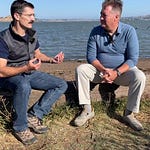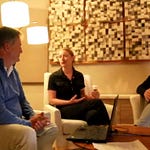Every day, roughly 10 people in the U.S. die from SUDEP (Sudden Unexpected Death in Epilepsy), most found face down in bed. Soterya is changing that with an ML-powered bed that detects sleep position and can gently reposition a person without waking them.
I spoke with Norman Wen about how ML, robotics, and thoughtful design are merging to improve sleep health, and potentially save lives. Norman is the CEO of Soterya, a company building what you might call a smart bed. Their bed, Korus, is built around a basic but life-saving idea: don’t let people sleep face down. That insight led to a system that can detect and reposition sleepers safely without relying on intrusive cameras and without waking them.
Embedded pressure sensors provide a real-time pressure map, which feeds into a machine learning algorithm trained to recognize body positions. While image-based AI has the benefit of massive open datasets, Norman’s team is tackling the harder path: building their own data internally to preserve privacy and stay within the mattress itself.
Not subscribed? Let’s fix that. No spam, just good content wherever I find it.
The actuation system comprises equally clever engineering. Pneumatic cells, each one both a sensor and a mover, create a modular surface that adjusts to the sleeper’s position. The system is being designed to reposition users without waking them, which means it needs to recognize both position AND sleep state. And all of this runs on the device, not the cloud, for reliability in critical situations like seizure prevention.
Beyond SUDEP, Norman sees a much broader opportunity: addressing sleep apnea, gastric reflux, chronic back pain, and even maternal health in pregnancy. Sleep position can affect all of these, and for people who are bedridden or aging with multiple conditions, this kind of intervention could be significant.
Right now, Soterya is pursuing a go-to-market path that starts with health-conscious consumers and moves toward regulated medical devices. That approach gives them room to develop, collect data, and refine the product while still making a difference. For people who can’t fall asleep wearing a device, a bed that just does the work passively may be a better answer.
At a time when we are becoming more aware of the importance of good sleep, this is one path to improvement that ultimately may have a huge impact.
Your deepest insights are your best branding. I’d love to help you share them. Chat with me about custom content for your life science brand. Or visit my website.












